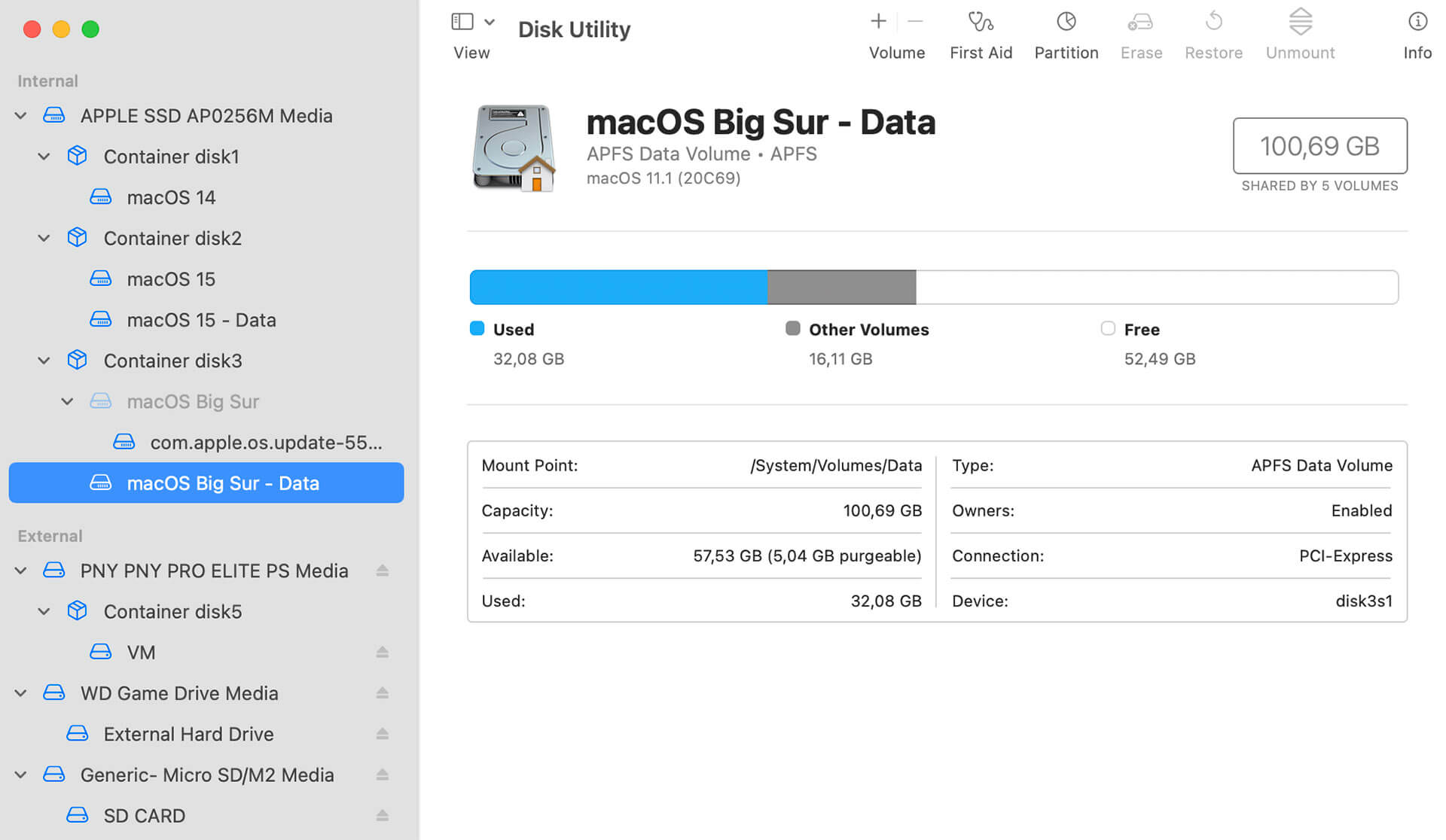

- #Best disk utility for mac 2015 for mac os#
- #Best disk utility for mac 2015 mac os#
- #Best disk utility for mac 2015 install#
If the original drive was not upgraded to High Sierra, that should be done first so the internet recovery feature on the computer is updated to High Sierra.Īgain, these instructions are intended for new internal SSDs only, with computers that have already had their original drive upgraded to macOS 10.13 High Sierra.ġ) After the new SSD has been installed into the computer, boot to internet recovery by pressing Command-Option-R until a globe is seen. Although Disk Utility should always be tried first, a Mac’s Terminal can be used to format the drive in these cases.
#Best disk utility for mac 2015 mac os#
Just select Edit and select Convert to APFS…īy using GParted with the simple steps above, we can easily create Mac OS Extended (Journaled) partitions and many other formats that Disk Utility does not support. If you need to create macOS High Sierra bootable USB from Windows, you can try Clover Boot Disk.Recently, some OWC customers have reported experiencing a situation where their new SSD will not show up in Disk Utility in High Sierra. Now you can convert Mac OS Extended (Journaled) partitions to APFS without losing data. If the Mac OS Extended partition is not Journaled, please journaled it first. Run Disk Utility, select the Mac OS Extended partition in the left column, then select File and select Enable Journaling. By default, macOS High Sierra can only be installed on an APFS partition. You can use Disk Utility to convert Mac OS Extended partitions to APFS without losing data. Convert to APFSįrom the MacOS High Sierra version, Apple announced a new file system called APFS. dev/sdaX is the partition you want to format. However, we can use Disk Utility to Enable Journaling. Or use the following command to format Mac OS Extended to Mac OS Extended (Journaled): sudo mkfs.hfsplus -J /dev/sdaX The Mac OS Extended partition created by GParted will not be journaled.
#Best disk utility for mac 2015 install#
GParted comes pre-installed on many Linux distributions like Ubuntu, Debian, Linux Mint… If you already have GParted installed, just use it. If not, you can download GParted or 4MParted ISO files then integrate into AIO Boot. You should use these two operating systems, as they have pre-installed programs that support the format. If you use GParted on Ubuntu, Linux Mint or Debian, you need to install hfsprogs. It supports many partition formats such as FAT32, NTFS, exFAT, Ext4 and of course supports Mac OS Extended. We can use GParted to create Mac OS Extended partitions in just a few simple steps. GParted is a well known disk partitioning program. If you want to install macOS High Sierra or later versions, just use the Convert to APFS feature on Disk Utility. In this article, I will guide you to create a Mac OS Extended (Journaled) partition with GParted. In this case, you can use other tools instead of Disk Utility. Disk Utility will report MediaKit reports not enough space on device for requested operation. This error occurs because the partitions created do not comply with Apple’s partition policy. In another case, if you are using a Seagate, WD My Passport or any other hard drive that you previously partitioned with another tool. If you are a Linux user or operating systems other than macOS, you probably use another tool.
#Best disk utility for mac 2015 for mac os#
Disk Utility only supports partition creation and formatting for Mac OS Extended (Journaled), exFAT, MS-DOS (FAT) and since MacOS High Sierra (10.13), it supports APFS. It supports creating, splitting, merging, resizing, deleting and formatting partitions on the hard disk.


Are you having trouble creating Mac OS Extended (Journaled) and APFS partitions using Disk Utility? If so, you can create a Mac OS Extended partition using GParted, then convert to APFS using Disk Utility.ĭisk Utility is a disk utility on macOS operating system.


 0 kommentar(er)
0 kommentar(er)
